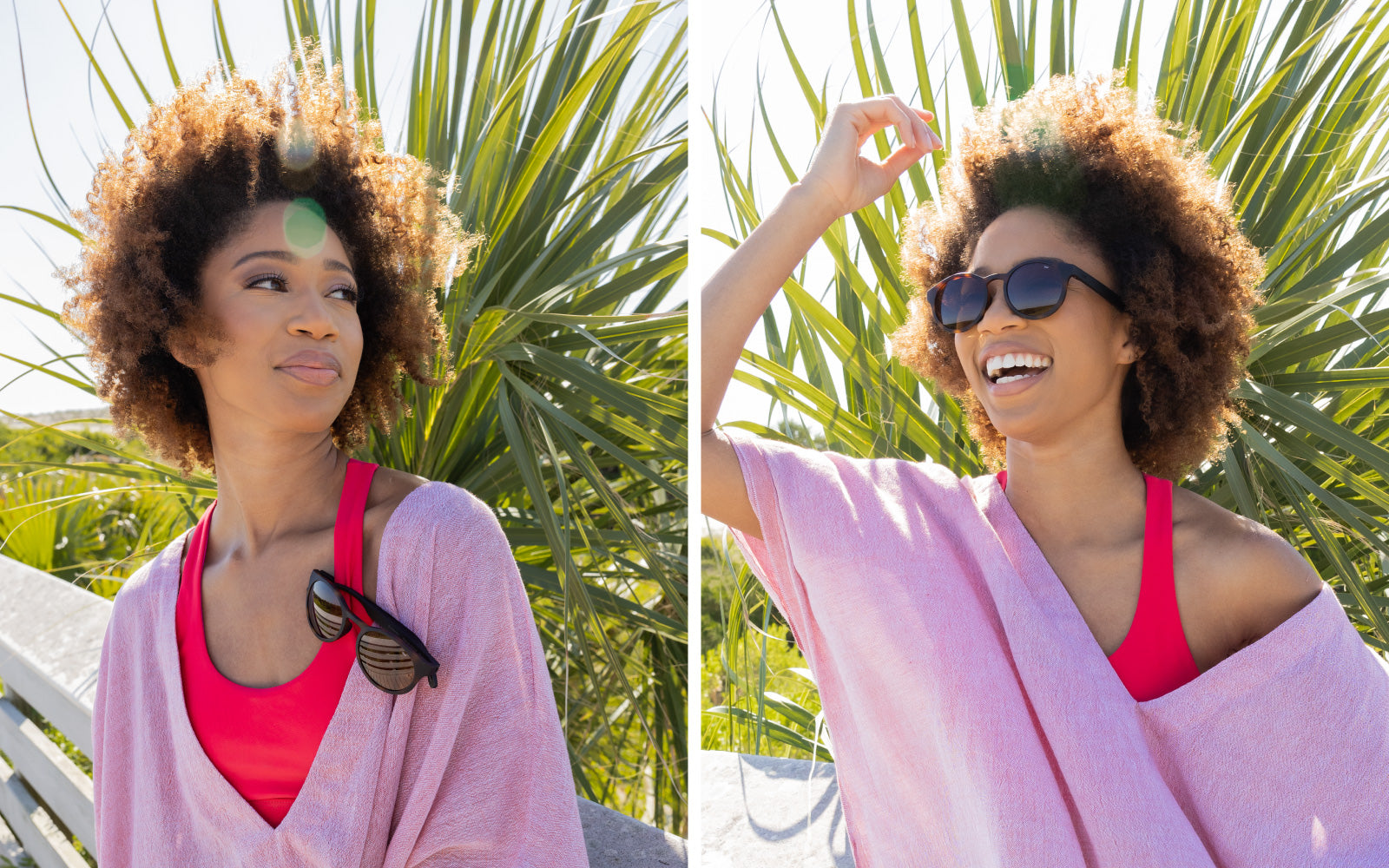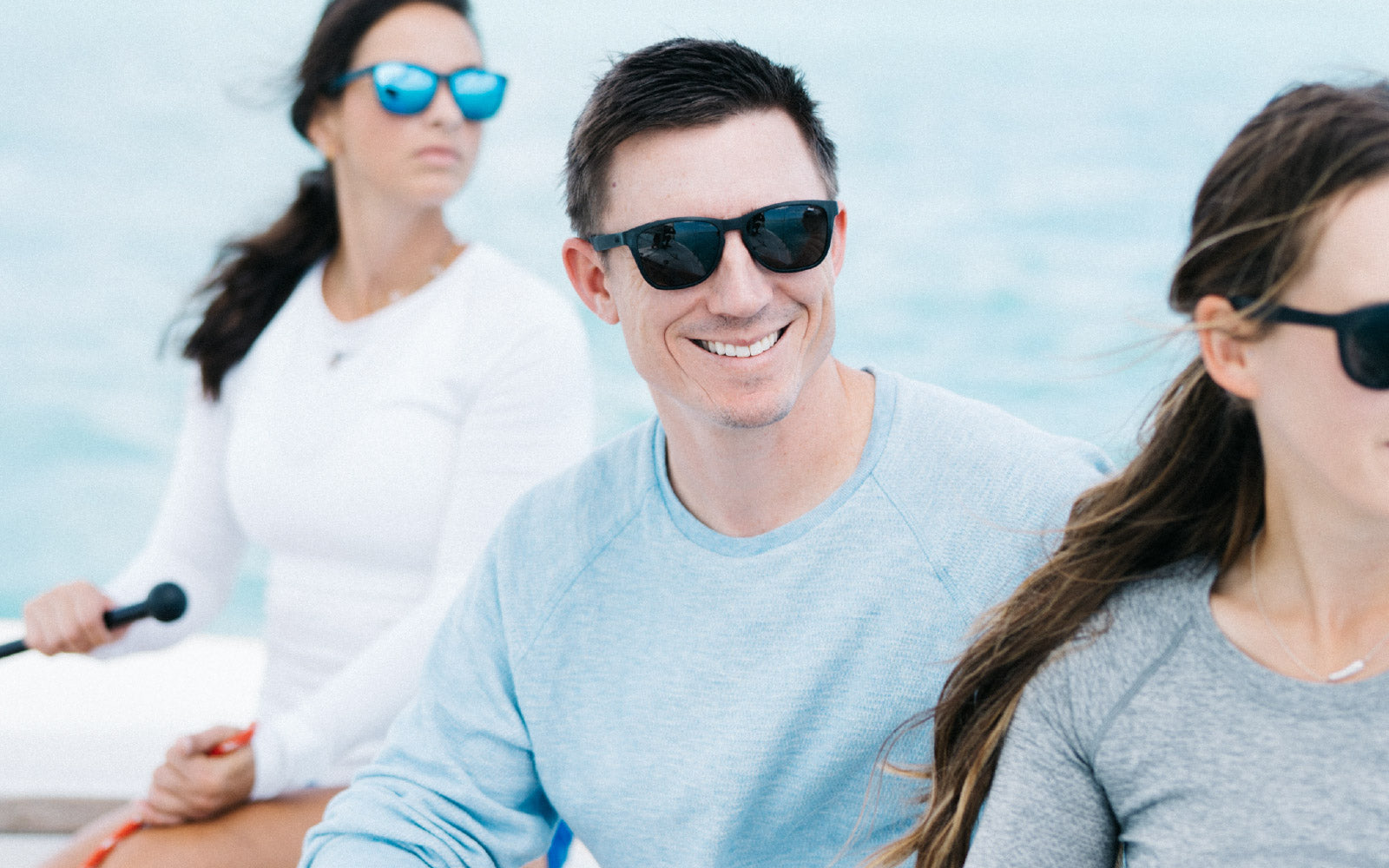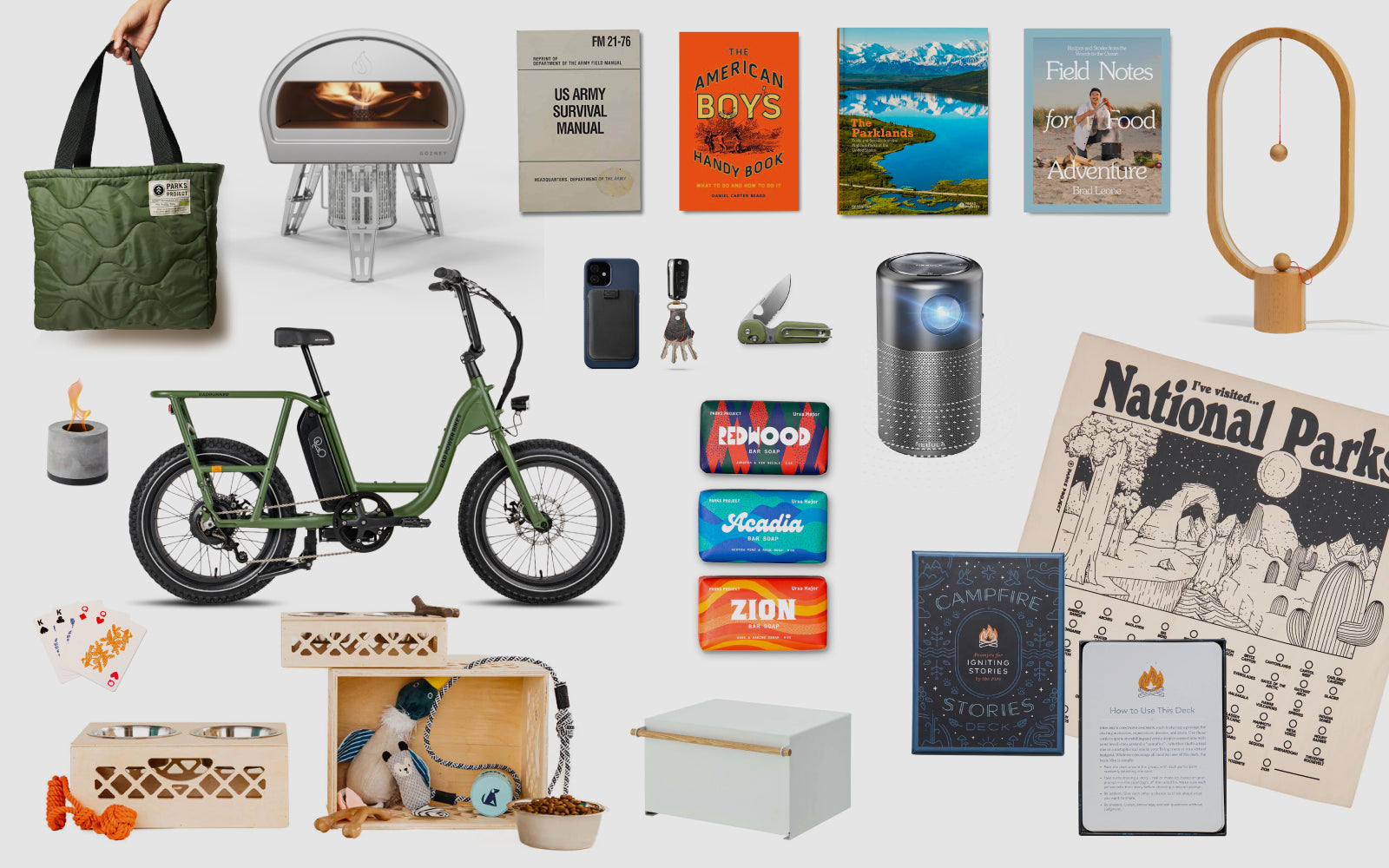
UV Rays Aren't Easy on the Eyes– and How You Can Deal With It
Summertime is when we all reach for sunscreen because we know it's good to protect our skin against the sun's rays, especially with skin cancer being the most common form of cancer in the US according to the EPA. But did you know that all year round, UV rays are also penetrating your eyes and causing cell damage? 10% of skin cancers are found on the eyelid, while some of the more common sun-related vision problems include cataracts, macular degeneration, and corneal growths.
So, what can we do to combat this daily damage to our eyes? It's a pretty cool solution: Sunglasses.
UV protection for your eyes is so vital, the American Academy of Ophthalmology has designated July as "UV Safety Awareness Month"
The World Health Organization has classified ultraviolet radiation from the sun as a human carcinogen – meaning it is a cause of cancer. UV radiation is made up of three types of rays: Ultraviolet A, Ultraviolet B, and Ultraviolet C. So what's the difference? A quick way to remember is UVA causes aging, UVB causes burning, and UVC rays are all caught by the ozone layer.
UVA and UVB rays are harmful to your eyes
In 2017 we launched our new line of MagLock™ Sunglasses on June 27th– National Sunglasses Day, an annual event by The Vision Council to promote sunglasses use.
"How often do you wear your sunglasses outside? Bottom line: Everyone should wear them, even when skies are gray. UV rays can infiltrate the eye no matter how many clouds are hanging around, and it’s best to get in the habit of wearing them all the time. Remember, preparation today can help sustain healthy vision for the future! #NationalSunglassesDay
The most important considerations when making eyewear purchases are UV protection, fit and comfort. Sunglasses that aren't comfortable or don't look good won't be worn. And without wearing them, shades aren't effective." The Vision Council
The best pair of sunglasses are the ones you have with you – but unfortunately, sunnies are notoriously hard to keep track of. That’s why MagLock Sunglasses are designed to be the most comfortable sunglasses to wear and the most difficult to lose, with hidden magnets that instantly mount to your fridge and other magnetic surfaces. For example, next time you're at the Surfjack in Honolulu (lucky you!), perch 'em on the screw of this Raw Elements sign while you slather on some of their free, reef-friendly sunscreen: 
Fun Fact: Surfjack was the first hotel in Waikiki to eliminate single-use plastic.
Sun's Out, Shades Out
According to the Skin Cancer Foundation, up to 80 percent of the sun’s UV rays can get through the clouds, so shade your skin and eyes as much as possible– even on overcast days. If you're forgetful, the hidden magnets of MagLock Sunglasses let you mount them on your fridge or Ferris ModStation so you're sure to grab your shades as you head out the door.
In fact, National Eye Institute encourages people of all ages to wear sunglasses that block UV radiation whenever you go outside during daylight hours, year round. Young eyes are especially susceptible, so if you know a young one, consider treating their peepers to a pair of Babiators.
And be warned that unmarked vintage or cheap sunglasses falsely claiming to protect against UV let even more of the harmful UV rays into your dilated pupils, potentially causing more damage than not wearing sunglasses at all. For this reason, insist on premium UV400 lenses which block 100% of UVA and UVB rays – which MagLock lenses do: 
Bonus points for polarized lenses!
We spoke with Dr. Wes Shealy of Lowcountry Eyecare, who recommends polarization to anyone buying sunglasses to further reduce their UV exposure. This is particularly important for those who spend time out on the water, on the road and even on the ski slopes – all places where sunlight is being bounced back up into the eye. The polarized lens cuts that glare, improving visibility and easing eye strain.
In order to understand when it's important to wear polarized sunglasses, you can think about how the polarization is actually working to filter light:
A polarized filter passes only the light that does not match its orientation. Most of the glare that causes you to wear sunglasses comes from horizontal surfaces, such as water or a highway. When light strikes a surface, the reflected waves are polarized to match the angle of that surface. So, a highly reflective horizontal surface, such as a lake, will produce a lot of horizontally polarized light. Therefore, the polarized lenses in sunglasses are fixed at an angle that only allows vertically polarized light to enter. How Stuff Works
To check that your sunglasses are polarized, simply tilt your head at an angle while looking at your computer monitor or phone; the screen will appear to darken on most devices if you're looking through polarized lenses:

It's important to note that not all screens behave the same — a true test of polarization would be to verify that light is blocked by the lenses of two pairs of sunglasses overlapped at a 90º angle (in this case, you need two identical pairs, or one is already known to be polarized).
Because glass is treated in different ways for various applications, this also explains why you may notice a rainbow, stripes or checkered pattern when looking through car windows through your polarized pair:
What you’re experiencing is just a simple matter of physics. Many rear and side car windows are tempered. What you’re seeing when you notice a checkerboard or rainbow pattern in a car window is an effect called stressed birefringence. Stress on optically clear materials often produces birefringence, which basically means that the material changes the polarization of the light. Revant Optics
In fact, the only time polarized lenses aren't recommended is if you're a pilot since visibility of gauges and instruments that use treated glass can be affected. Otherwise, polarized sunglasses are a popular choice for good reason!
More helpful tips for UV protection from the FDA:
- Always choose sunglasses labeled with 100% UVA/UVB rating.
- The darkness of the lens does not indicate its ability to shield your eyes from UV rays.
- Know that pricier sunglasses don’t ensure greater UV protection.
- For complete UV protection, wear wide-brim hat and, of course, sunscreen.
Sources:
Environmental Protection Agency, "Health Effects of UV Radiation"Skin Cancer Foundation "Skin Cancer Facts and Statistics" and "Guide to Sunscreens"
The Vision Council Resources and 2016 UV Report
All About Vision "Ultraviolet (UV) Radiation and your Eyes"
How Stuff Works "How Sunglasses Work: Polarization"
Lifehacker "Find Out if Sunglasses are Polarized by Looking Through Two Pairs"
Revant Optics "Why You're Seeing Rainbows In Car Windows"
FDA "Tips to Stay Safe in the Sun: From Sunscreen to Sunglasses"


